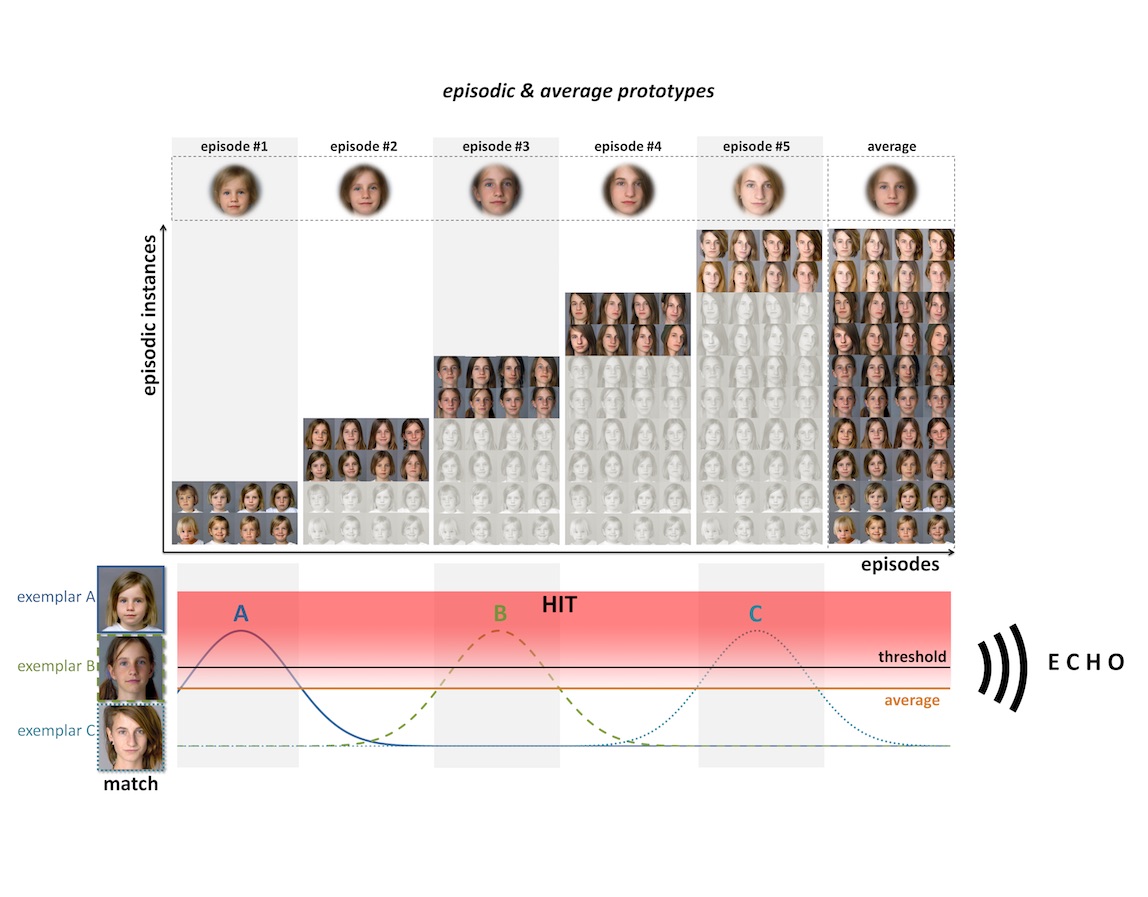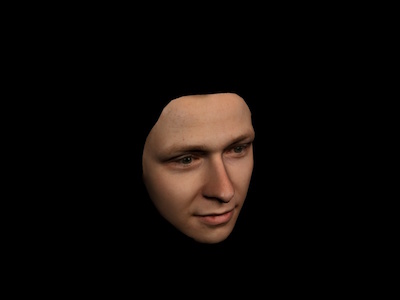On the genesis and processing of facial representations and prototypes
Face researchers address a huge variety of perceptual and processing issues of faces while hardly addressing how exactly facial representations and prototypes are generated and on which experiences they are established. Scientific recognized theories like the “recognition by prototypes” theory (Basri, 1996) define (facial) prototypes as results of principal components or averages of given exemplars (Burton, Jenkins, Hancock,& Withe, 2005).
Furthermore, several theories (e.g. Valentin, 1991; Busey, 1998) postulate a so called “face-‐space” as the respective prototype (most typical face) provides the centroid and the unique exemplars of a face are encoded as a point in this n-‐dimensional space along dimensions which discriminate faces, such as age, ethnicity, etc. Distances between two points are analogous to the similarity between the respective faces. It is assumed that this face-‐space corresponds to one’s facial representation of a certain person. However, there is no knowledge about the genesis of
such a face-‐space and the dynamics of changes over time. Moreover, it is not clear, if these representations actually can be seen as averages of agiven face, or as a combination of multiple prototypes. Consequently, this study attempts to investigate the characteristics of facial representation and the possibility of multiple prototypes.

Burton et al. (2005) proposed a convincing and sparse theoretical framework for the representation of faces which was further empirically proved by showing that averaged faces provide the best representation of a person's facial outward appearance (e.g. Webster & MacLeod, 2011). However, the theory seems to be limited to a certain period of time in a human’s life and neglects temporal dynamics due to dramatic changes in the first years of a life and a less pronounced but still available development of facial characteristics over time (see also Wirth & Carbon, 2010; Carbon, 2009). Here we showed that it is even more economical and more precise to propose "episodic prototypes" which represent a characteristic time span of a human life, e.g. the "baby episode", the "youngster episode", "the aged episode" etc.
Further research will be directed towards optimizing these episodic prototypes by utilizing, e.g. weighting procedures for generating such prototypes.
Schneider, T. M., & Carbon, C. C. (2021). The Episodic Prototypes Model (EPM): On the nature and genesis of facial representations. I-Perception, 12(5), 1-46. {IF=1.535}
Legal note: PDF are provided for convenience, in order to share scientific findings with colleagues. Because some of these files are copyrighted, please download only if you or your institution has a subscription to the journal.

